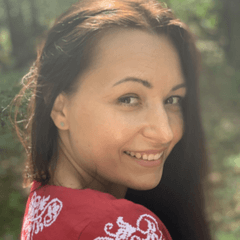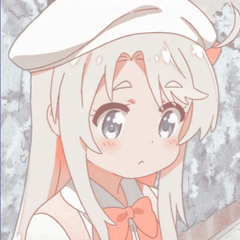Painting Eyes Step-by-Step (EXTRA: Eyebrows and Makeup)
This is a step-by-step tutorial that you can follow along to learn how to paint a realistic looking eye quite fast. It might take a bit longer the first time you try, but if you keep applying these steps in your works, you’ll get faster and faster.
I made the effort to not skip any of the small steps that will alow you to paint an eye similar to mine. That's why the tutorial might look longer, but it's only because it shows you every single step to take. Hope this helps, especially beginners ♥
The brushes I use are slightly modified versions of the default brushes. But you can use the normal ones and achieve similar results.
1. Rough Pencil (Increase Brush Size minimum to 25 on the Pen Pressure Option)
2. Dense Watercolor
3. Dense Watercolor “Rounded” (Set Brush size minimum to 30 on the Pen Pressure Option - You can do higher or lower depending on your preference)
4. Airbrush Soft
5. Decorations: Effect > Sparkle A
6. Blend (Increase “Color Stretch” to 70)
Now, for the actual drawing part, you can either draw the same eye I’m doing or a different one if you’d like. In that case I’d highly suggest using some sort of reference for drawing them, it helps you learn all the small details and intricacies of the eye (and eyebrows).
Sketch
♥ STEP 1:
Let’s start with some simple parallel lines with the Rough Pencil on a layer we will call "Guide". You can use the Special Ruler for parallel lines if you are having trouble. But you don't need to be precise, as you can see, mines are not perfect either.
The top ones are for the eyebrows, I have added them as an extra for the tutorial. If you are not interested you can skip that section and just focus on the eyes.
♥ STEP 2:
Create a layer called "Lineart". Start with very geometric shapes: sort of a crystal shape for the eye and the blade of a knife for the eyebrows.
♥ STEP 3:
When you have found a proper shape, smooth and round the edges, but don’t overdo it.
♥ STEP 4:
You may also add some small indication of the top and bottom folds of the eyelids and a vague indication of the eyelashes.
To draw some nice looking lashes, remember two simple concepts:
1. Eyelashes flow outwards around the eye, so they don’t all go in the same direction
2. They are softly curved.
♥ STEP 5:
Eyelashes behave somewhat chaotically, they are very tiny strands of hair after all. So move your hand quite fast and let the pen stroke fade outwards from the eye.
Enjoy the process, trust me, it’s more important than making the “perfect drawing”.
♥ STEP 6:
When you have achieved a result that you like, create a new layer called "Shading"at 50% opacity.
Make your Rough Pencil larger and lower the opacity (or hold the pencil horizontal to the drawing tablet if you have one that recognizes pen tilt) and shade the areas like in the picture below.
In Blue you can see the areas hit by the light and in Red the areas of darkness.
As you can see, adding even some very simple flat shadows, the eye is already starting to have some depth. I went ahead and shaded the iris, tear duct and eyebrows as well.
Base Colours
Keep the Shading and Lineart layers on top. Underneath add two more layers: "Base" and "Background".
♥ STEP 1:
Choose the Rounded Dense Watercolor, select a large brush size and start filling Background with a colour you like. Preferably dark if you’re doing a lighter skin or light if you’re doing a darker skin.
This step is not necessary, you could just do the skin colour on a white background, this just adds some dynamicity. Add some slightly different colours in there and you’ll quickly get a pretty looking background. You can alternatively use the Fill tool.
♥ STEP 2:
On the Base layer, start colouring the skin. A quick tip: leave the edges uneven, they'll somewhat simulate oil painting.
I’m using a pale golden skin tone, but you can use whatever you want. Pale, dark, olive, blue or green. You could be doing an alien. Have fun !!
♥ STEP 3:
Add some quick undertones using the Rounded Dense Watercolor. Put some blue and pink here and there. Place them wherever you feel like as long as you follow the geometries of the eye and the areas around it. You don’t necessarily need to use pink and blue, other colours can work as well, although I’d suggest using complementary colours.
Try placing them roughly where I placed them if you're unsure about where to put them.
Quickly darken the areas of shadows to creat more contrast. You can be very loose with the paint at this point.
♥ STEP 4:
Color the sclera (the white part) of the eye and the iris.
♥ STEP 5:
Switch to the Rough Pencil Brush and create a new layer called "Eyelashes". Trace the eyelashes with a darker colour to make sure it doesn't get blended with the rest of the colours later.
♥ STEP 6:
Go back to the Base layer and select the modified Blend Tool. Blend the undertones and the shadows. Remember to follow the shapes of the areas surrounding the eye.
♥ STEP 7:
Create a layer called "Overlay" between Base and Lineart. Make it clip to the layer below (Base) and fill it with the colour of your Skin tone.
♥ STEP 8:
Reduce the opacity of the Overlay layer to 30% and merge below with the Base.
♥ STEP 9:
Still following the geometries around the eye as shown earlier, blend the undertones into the Skin colour but don't make them disappear completely.
Quick Tip: I made the Eyelashes a bit darker. An easy way to do it is to add a Clipping Layer on top of the Eyelashes and colour it with a darker colour, then merge down.
♥ STEP 10:
Merge Lineart and Shading together into the Base layer.
Switch between the Blend and Round Dense Watercolor brushes to add and blend shapes trying to make the lineart become part of the painting. Help yourself with the Color Picker tool and pick the colours directly from the painting from adjacent areas.
Avoid blending too much, you don’t want the illustration to look too blurred.
Iris
♥ STEP 1:
Color the pupil with a dark colour on a separate layer right under the Eyelashes.
♥ STEP 2:
Back in the Base layer, trace the border of the iris with the same colour as the pupil.
Proceed by colouring the iris itself with the actual colour of you have chosen for this eye.
♥ STEP 3:
Using the Round Dense Watercolor brush shade the upper part of the iris, where it touches the upper eyelid, then blend everything with the border you have traced before using the Blend tool.
♥ STEP 4:
Select the Iris with the Selection Pen.
♥ STEP 5:
Draw thin lines of various colours on different layers using the normal Dense Watercolor. I suggest four layers, but you can do more or less. I’d say do at least two and don’t do more than six. Have fun adding different colours and the more contrast you create, the more interesting the eyes will look !
♥ STEP 6:
Blur each layer with Gaussian Blur. I use Strength between 6.50 to 10. Try experimenting to see which one works best for you. If you want to do what I did for this specific eye, to make it simple I used 7.70 Strength on all four layers.
♥ STEP 7:
Change the Blending Mode on the layers. I usually do a layer of highlights (Hard Light), one of dark spots (Multiply) and then two normal. Here are the values of opacity for each. Once you’re satisfied with the result, merge all layers with the Base.
♥ STEP 8:
Darken the areas of shadows underneath the eyelid inside the eye and the top and bottom eyelid folds.
Also, if your eyelashes are not dark enough like mine, go ahead and darken them a bit more using the same method described earlier..
♥ STEP 9:
To add the highlights, create another level (above the Base and under the Eyelashes) and use the Rounded Dense Watercolor brush to add the spots where the light hits.
The eyelashes cast some of their shadow on the light spot. To emulate that, use the Erase tool Soft with a Hardness of 4 (or 80%) and reduce its size until you can make very thin lines. Erase some semicircles and lines from the top of the light spot.
The eye is done !!
If that is all you needed, thank you for following the tutorial. Please feel free to leave a comment below if some parts aren't clear. I'll do my best to answer and help. And if you follow me on IG or Twitter, feel free to post your art and tag me ♥
Below are some extra for eyebrows, makeup and quickly changing eyecolour (in less than 3 minutes !). I'll make a more in-depth tutorial for each of those in the future
EXTRA: Eyebrows
♥ STEP 1:
Using the the Dense Watercolor brush start adding the hair. Let your hands flow quickly in the direction of the eyebrows and start building the base.
♥ STEP 2:
Once you have a dark base, begin adding some lighter colour, still following the same direction to make the eyebrows look more natural.
EXTRA: Make Up
♥ STEP 1:
To paint a very simple make up, start by adding a base colour with the Airbrush Soft on a separate layer. Pay attention to not lose the areas of light and dark underneath.
♥STEP 2:
Use the Rounded Dense Watercolor to define the areas of shadows and light if you need to. When you're satisfied, merge with the Base layer.
♥ STEP 3:
Then blend the eyeshadow with the rest of the skin. If you've applied real makeup, the process is not that different.
♥STEP 4:
As the final touch, use the Decorations: Effect > Sparkle A and add some glitter to the eyeshadow. Not necessary, but I love glitter.
EXTRA: Quickly changing Eyecolour
♥ STEP 1:
Use the Selection Pen to select the Iris.
Then go to Layer > New Correction Layer > Hue, Saturation, Luminosity
♥ STEP 2: Change the values to get the colour you want.
♥ STEP 3:
Colour the border of the Iris and fill the pupil again if it became too light like STEP 1 and 2 in "Iris" section. Blend the borders with the new eyecolour and add some details with blurred layers like STEP 5, 6 and 7 for the "Iris".
And the tutorial is complete !!
Thank you for following this tutorial, I know it was a long one and I'm glad you went through it ! Hopefully this will help you find some steps to follow when you're painting eyes. Please leave a comment letting me know what you thought and if there are questions you'd like to ask, I'll be sure to answer them !
Have a wonderful day ♥
























Comment